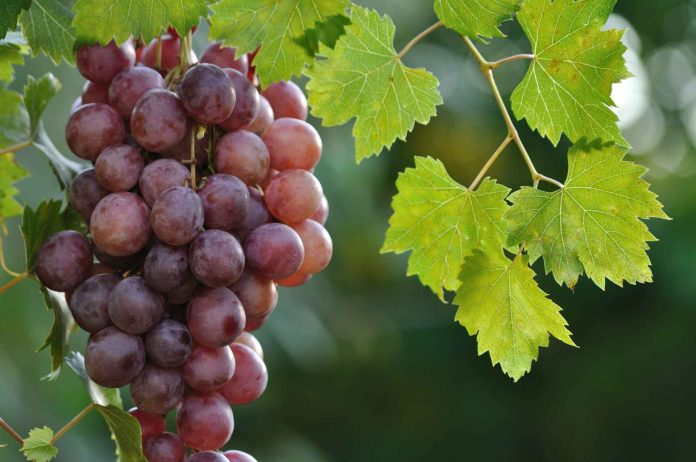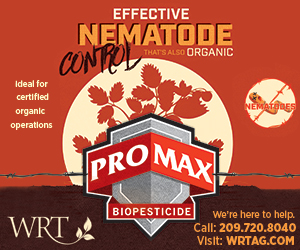Uniform and timely red table color development is a crucial component of grape quality. California’s table grape growing regions have climate conditions that favor productivity and other aspects of fruit quality, but hot summer temperatures can inhibit coloring. For this reason, many growers use certain plant growth regulators that can promote faster and more uniform color.
Different plant growth regulators are used in table grape production. Those used to increase berry size may also suppress coloration. Other PGRs are applied to bring color.
Matthew Fidelibus, UC Davis viticulture specialist, said the most common active ingredients in products sold to promote color in table grapes are ethephon and S-abscisic acid. Most table grape growers use some type of PGR to improve crop quality.
Degradation of ethephon releases ethylene, a plant hormone that promotes pigment accumulation in grapes. Timing and application rate for ethephon are important for optimizing quality. Late or excessive applications can result in soft berries, which decreases shelf life and opportunity to export.
Ethrel® is a trademarked ethephon product that has been marketed by Bayer to promote early uniform color development in red table grape varieties. Treatment is advised when 5 to 30 percent of berries show color. Rates will vary depending on site temperatures. Higher than recommended rates can cause fruit to soften. There is also a 14-day harvest interval after an application and MRLs (maximum residue levels) apply.
Vineyards under stress due to insect damage or under irrigation should not be treated with ethephon. Absorption by plant tissues is influenced by temperature, humidity and pH of plant surfaces. This PGR must be applied at a rate sufficient to wet vines and fruit clusters uniformly.
Following label instructions for PGRs is important, Fidelibus added, to achieve efficacy and also due to post harvest intervals with ethephon.
S-abscisic acid (S-ABA) is the active ingredient in ProTone®, a trademarked product marketed by Valent. S-ABA is a naturally occurring PGR that is involved in many processes of plant maturation including senescence. This product is exempt from post-harvest interval restrictions.
S-ABA is involved in many major processes during plant growth and development including dormancy, germination, bud break, flowering, fruit set, general growth and development, stress tolerance, ripening, maturation, and senescence.
While grapes can normally produce enough of this PGR for color development, high temperatures can hinder production. The ProTone product can be used to supplement the naturally occurring S-abscisic acid to achieve faster and more complete coloring.






















